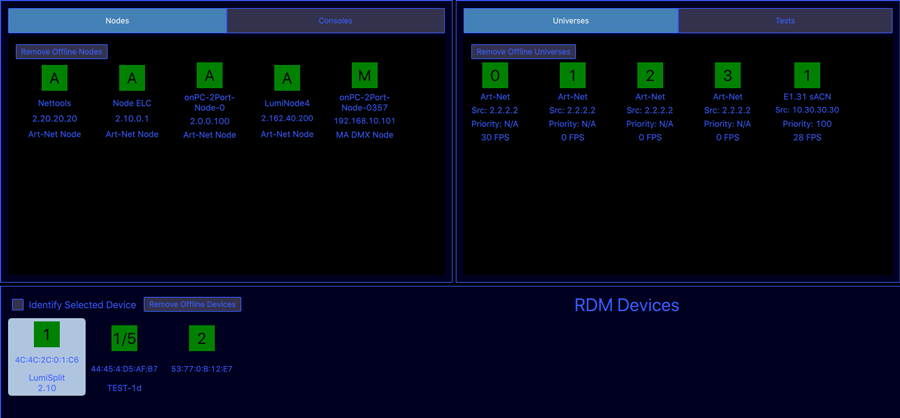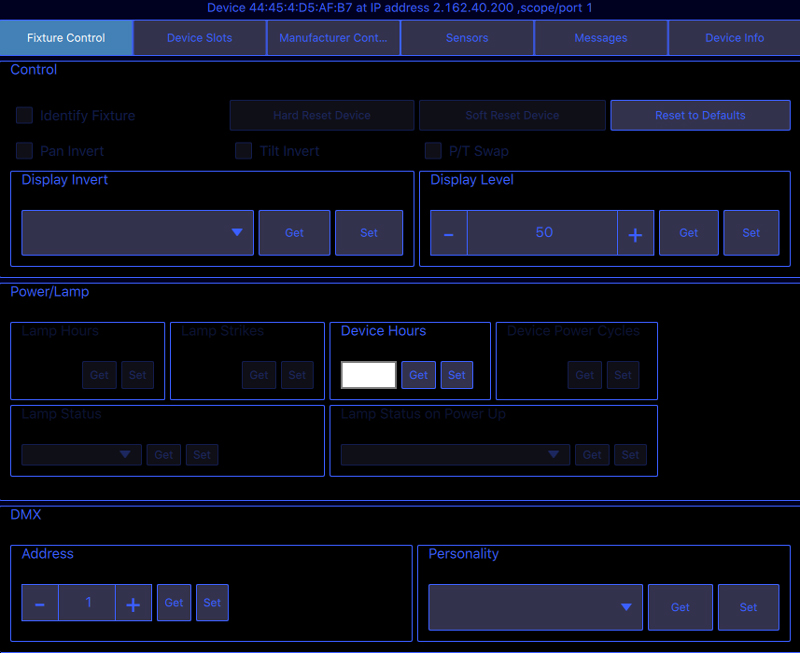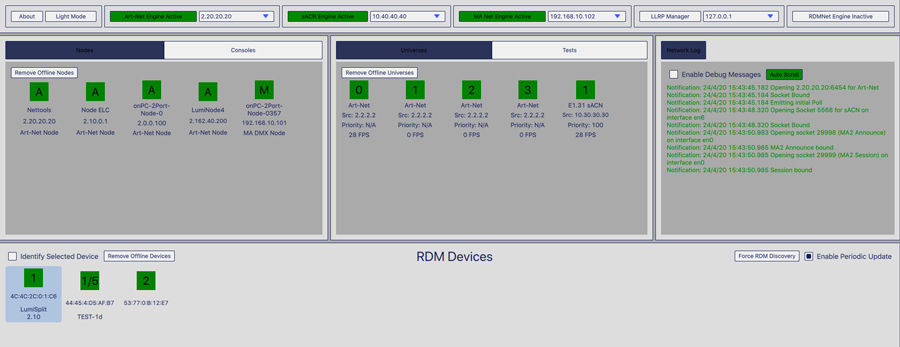D5 Systems, specialized in software development and stage lighting control solution, launches its new free LxNetTools monitoring software, Mac and PC compliant.
A finding
When you use Ethernet technology to route your stage or architectural lighting control packets within a network, it quickly becomes obvious a monitoring solution is essential.
Why? because we simply want to make sure the packets travel correctly and arrive on time at their destination. So, when our dear console operator colleague launches the famous adage “it doesn’t work, it’s because of the network!”, We want to be able to prove to him that what he is sending from this console that he cherishes so much is incorrect, and it is not sending the right information.
Firstly, a good monitoring software will allow us to show him that he’s not sending the right information or that his console is misconfigured, and secondly, this will support our comments when we offer him a less challenging career 😉. Today, it is easy to find a software to monitor Art-Net, sACN, RDM, a plethora of solutions already exist.
However, many of them are limited to one task, or to one or two lighting protocols. Some offer more protocols but restrict you to the use of their proprietary hardware to be able to access the monitoring of all protocols. Finally, some of this software is limited as to the operating system they use. However, the performing arts world includes many Mac and PC users.
Based on this, David McCulloch, founder of D5 systems, decided to create LxNetTools. First, David created this software for his own needs because he couldn’t find an all-in-one solution. Secondly, and in his great goodness, he decided to make the software free, thus allowing the whole stage lighting control community to use this software.
LxNetTools
The name says it all: Lx = Light, Net = Network, Tools. LxNetTools is Mac and PC compatible and is easy to install. Once installed and launched, the software offers you a rather clear workspace.
The software consists of 5 distinct modules:
– At the very top: the network interface and engine selection menu
– Middle left: The node and console display panel
– In the center: The universe display panel and the test generator
– Middle right: The log file
– Bottom: the RDM equipment display panel
The software supports Art-Net and sACN protocols for visualizing and generating lighting channels, and the RDM protocol as well. This is where the second good news comes in: LxNetTools supports Art-RDM (RDM via Art-Net), but RDMNet and LLRP as well, two components of the new RDM over IP standard. This means LxNetTools is ready for the future, now let’s wait for the manufacturers to implement RDMNet in their lighting fixtures or consoles.
Important detail: LxNetTools allows you to select the interface in combination with the protocol of your choice. Basically, the software will allow you to use a network interface for Art-Net, another for sACN, and a third for …. MANet 2!!
Yes! this is one of the other major advantages of this software, LxNetTools enables you to see the online GrandMA 2 consoles, as well as the nodes and NPUs of the same system. This protocol interface selection system makes LxNetTools the ideal companion for converged light network monitoring (several types of lighting protocol on the same network).

I fell in love with a very intelligent feature: in the test generator, the user will be able to generate a range of universes, and each universe will send the universe number assigned to it as a DMX value set to all the channels of this universe. Long story short, you send universes from 1 to 8, and each universe sends all its channels with the value of the universe, which allows you to easily identify a universe with a DMX tester: Brilliant!
This feature already is available in some lighting controller, but having this in a monitoring software is a great add-on.
With Art-Net and sACN, the user will be able to visualize the channel values in real time for each discovered universe, and with RDM he will be able to use generic commands such as identify, DMX address settings, mode….

If you do not fancy the night theme, a day theme is available as well, ideal for the sunny festivals that will not take place this year …

The software is in its infancy, and David McCulloch has confirmed to me that other features will be added, such as a patch function to quickly address lighting fixtures via RDM.
This kind of initiative is to be congratulated, because in these painful times, the notion of sharing takes on its full meaning, and this software will undoubtedly help many technicians keen on lighting control networks.








